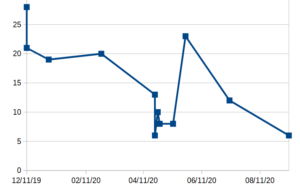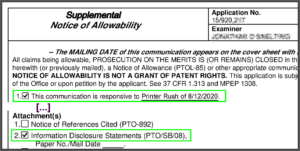
 I am delighted to report that two more Offices have announced their participation in the DAS system. These are the Italian Patent and Trademark Office and the Superintendence of Industry and Commerce of Colombia (the Colombian patent and trademark office). Here are details of the Depositing-Office participations:
I am delighted to report that two more Offices have announced their participation in the DAS system. These are the Italian Patent and Trademark Office and the Superintendence of Industry and Commerce of Colombia (the Colombian patent and trademark office). Here are details of the Depositing-Office participations:
| |
Colombia is a Depositing Office? |
Italy is a Depositing Office? |
| National industrial design applications |
yes since August 28, 2020 |
yes since October 1, 2020 |
| National patent applications |
yes since August 28, 2020 |
yes since October 1, 2020 |
| National trademark applications |
|
yes since October 1, 2020 |
| National utility model applications |
yes since August 28, 2020 |
yes since October 1, 2020 |
PCT international applications filed
With the office as a PCT receiving office |
yes since August 28, 2020 |
yes since October 1, 2020 |
One striking aspect of this is the participation of RO/CO and RO/IT as Depositing Offices. This reminds us that among the IP5, the straggler Receiving Offices are RO/JP, RO/KR, and RO/US.
Note, too, the ever-increasing participation of Offices in DAS with respect to trademarks.
This also offers a reminder that these two Offices offer utility model protection.
Here are details of Colombia’s Accessing-Office participation:
| |
Colombia is an Accessing Office? |
| Hague international applications |
yes since August 28, 2020 |
| National industrial design applications |
yes since August 28, 2020 |
| National patent applications |
yes since August 28, 2020 |
| National trademark applications |
yes since August 28, 2020 |
Who is the most trendy, modern and up-to-date Colombian intellectual property firm? Be the first to provide to me an application number, filing date, and DAS access code for a design application, a patent application, a utility model application, and an RO/CO application, and I will recognize your status as the most trendy, modern and up-to-date in Colombia. (I will blur part of the application number in the Certificates of Availability that I obtain and post.)
Who is the most trendy, modern and up-to-date Italian intellectual property firm? Be the first to provide to me an application number, filing date, and DAS access code for a design application, a patent application, a trademark application, a utility model application, and an RO/IT application, and I will recognize your status as the most trendy, modern and up-to-date in Italy. (I will blur part of the application number in the Certificates of Availability that I obtain and post.)


 In the PCT listserv, a practitioner recently exasperatedly asked:
In the PCT listserv, a practitioner recently exasperatedly asked:



